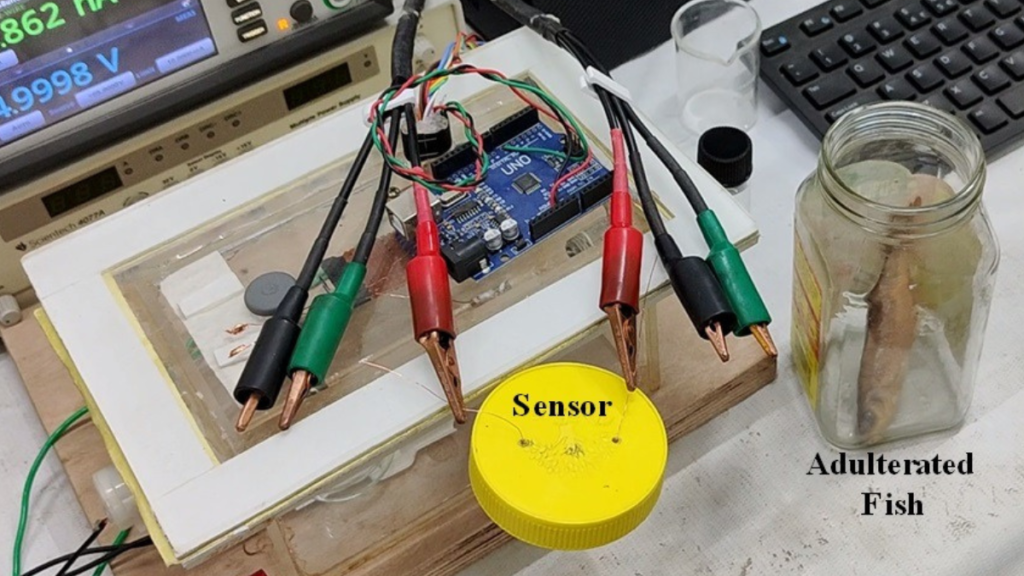In a groundbreaking development, scientists have introduced a low-cost sensor designed to detect formalin in fish. The innovation aims to address concerns surrounding the use of formalin, a harmful chemical often used to preserve fish but poses serious health risks when consumed.
The sensor, developed by a team of researchers, offers a cost-effective solution to identify the presence of formalin in fish products. Also, formalin, a solution of formaldehyde, is known for its preservative properties but is also a potential carcinogen when ingested.
The new sensor works by analyzing fish samples for traces of formalin. Moreover, providing a quick and reliable method for consumers and regulatory bodies to ensure the safety of fish products in the market. This breakthrough technology is expected to revolutionize the monitoring process. Also, offering a practical and affordable means of safeguarding public health.
Formalin contamination in fish has been a longstanding concern, leading to health hazards and consumer distrust. With the introduction of this sensor, consumers can take a proactive approach to verify the safety of the fish they purchase, contributing to a healthier and more secure food supply chain.
Low-cost Device
The device’s low-cost nature makes it accessible to a wider demographic, enabling small-scale fisheries and local markets to implement regular screenings without incurring significant expenses. Moreover, this democratization of technology empowers communities to take charge of their food safety, reducing dependency on costly laboratory tests.
Government authorities and regulatory bodies are expressing keen interest in integrating this sensor into their monitoring protocols. The technology aligns with global efforts to enhance food safety standards, ensuring that consumers have access to untainted, quality seafood.
Researchers involved in the project emphasize the simplicity and efficiency of the sensor, envisioning its widespread adoption as a tool for routine fish quality checks. Further, the device’s ability to detect formalin in real-time addresses a critical gap in current monitoring practices, providing a timely and reliable solution.
As the low-cost sensor gains attention, there is optimism about its potential impact on reducing formalin-related health risks associated with fish consumption. By promoting transparency and accountability in the seafood industry. Besides, this innovative technology marks a significant step towards ensuring the well-being of consumers and fostering a safer food environment.


